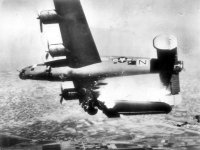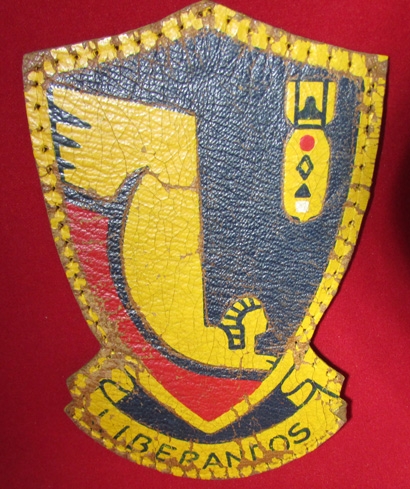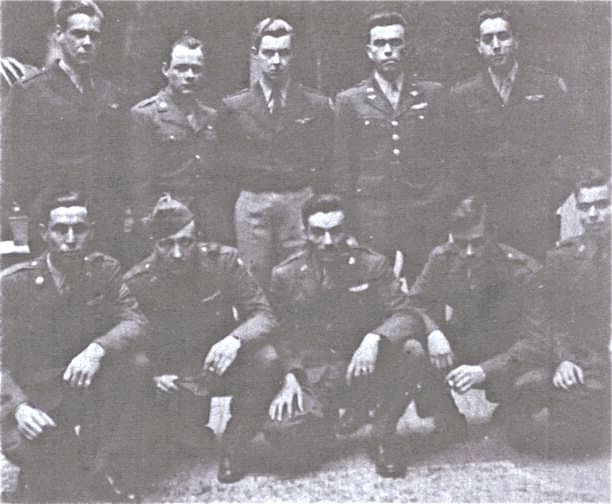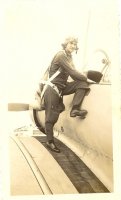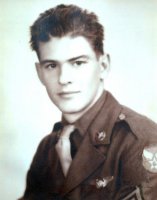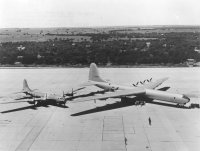OneManGang
Senior Member
- Joined
- Sep 7, 2004
- Messages
- 1,851
- Likes
- 8,239
Tennessee vs The Maxims vs Florida
DATE: 24 September 2022
PLACE: Neyland Stadium
ATTENDANCE: 101,915
FINAL SCORE: Tennessee 38 Florida 33
It was a long time ago in a galaxy far, far away, but the sentiment is the same …
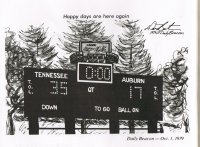
It was somewhere around the middle of the third quarter Saturday that I got a feeling that I had not had in Neyland Stadium for quite sometime. Neyland was rocking, the crowd was going bonkers, my ears were ringing from the noise and my throat was complaining about the abuse I was dishing out. Indeed, I spoke with Younger Son&Heir Sunday and it took him three tries get his voice working enough to answer the phone.
Games like we experienced Saturday are why we do this. It's why we shell out a king's ransom for season tickets, why we spend enough on 3 hot dogs and 3 Cokes to buy a prime rib dinner with all the fixings. It's why we sit through games against glorified high school teams like Ball State, or worse through disasters like the Georgia State game during the Pruitt saga. In short, games like the one Saturday are why we are college football fans in general and Tennessee Vol fans in particular.
The weather was as near perfect as can be. The stadium was resplendent in the Orange and White Checkerboards formed by the attire of the Tennessee fans. The National Anthem featured a flyby of a KC-135R Stratotanker of the 134th Air Refueling Wing. Note to the crew of the aircraft: We love you guys even if the UT PA announcer can't tell the difference between the Army and the Air Force! During the normal segment honoring a vet in attendance the A-10 driver in question got down on one knee and asked his girlfriend to marry him AND SHE SAID YES!
To quote the late Mr. Charles William Daniels of Mt. Juliet, Tennessee, “It's good to be alive and be in TENNESSEE!”
The game itself provided all the action and fireworks to cover a multitude of the sins of previous seasons. The two teams combined for 71 points and 1170 yards of total offense. Whew!
Florida took the opening possession and drove to the Vol 20 where they failed on a fourth down conversion, the only one they failed on all day. Tennessee took the subsequent possession down to the Gator 25 where Princeton Fant coughed up the ball. The ensuing Florida drive ended in a failed field goal attempt. Finally the UT offense got on track and their next drive was capped by a 32-yard field goal.
End of 1st Quarter
Score: Tennessee 3 Florida 0
Florida scored on two of their three drives in the second quarter. The Vols matched that with two touchdowns of their own. The first UT score showcased touted wide receiver Bru McCoy who hauled in a 70-yard pass from Hendon Hooker to put the Vols in business on the Gator 4. Hooker did the honors on the next play. The other Vol scoring drive came via a thrilling 99-yard drive which ended in a pass to McCoy in the end zone.
End of 2nd Quarter
Score: Tennessee 17 Florida 14
The fireworks continued in the third canto. For the Vols it was the Jabari Small Show who scored on a 16-yard pass reception and a 1-yard run. Florida answered with a score of their own.
End of 3rd Quarter
Score: Tennessee 31 Florida 21
The Vol faithful were feeling pretty good with a 10-point lead going into the final act. They felt even better when the defense forced a Gator fumble and Jaylen Wright scored on a five run to make it a three possession game. The Vols would need that margin. The Gators scored on their next two drives. They tried for a two-point conversion after the second TD but failed. They also tried onside kicks and failed on the first but recovered the second on the Gator 47 with 16 seconds left. A Tennessee interception as time expired finally settled the Giant Water Lizards' hash.
Final Score
Score: Tennessee 38 Florida 33
*******
This one is for you, @Tin Man
Morning, Tuesday, 10 April 1945, Briefing Room, 779th Squadron, 464th Bomb Group (H), 15th Air Force, Pantanella Airfield, Italy
The Big Boss of the 779th Squadron, Lt. Col. James Gilson, got up to deliver his part of the day's briefing. They would be flying against targets around Lugo, Italy, in support of American ground forces. By this point in the war the Luftwaffe was a non-factor. FLAK (anti-aircraft artillery) was expected to be minimal. Recon photos showed only one four-gun battery in the area. In the lingo of the day they figured this would be a “milk run” or easy mission. Due to that, many of the crews were made up with men nearing the end of their combat tours. Bombing altitude would be 15,000 feet to ensure accuracy and avoid hitting friendly troops. Each bomb group was assigned a specific area to hit and those were then subdivided and targets assigned to the individual squadrons.
After the briefing, Lt. Col. Gilson went out to his plane. He had named his ship “Stevonovich II” after his son back in Chicago. To the U.S. Army Air Force, she was a B-24L Liberator, serial #44-49710 built by Ford at their huge Willow Run facility constructed for the express purpose of building B-24s. She had been modified as a “Pathfinder” or “Mickey” ship with a radar dome replacing the ball turret to facilitate “blind bombing” through cloud, fog, or smoke. She was painted overall gray with a large black letter “N” in a white square painted behind the waist guns. This yielded her call sign. In the phonetic alphabet used in World War II, “N” was “Nan,” ergo, the call sign “Black Nan.” Another plane seen in photos carried a white “A” in a black box and was “White Able” from the 778th Squadron. With the addition of a radar bombardier and an additional navigator “Black Nan” carried an eleven-man crew while regular B-24s had ten.
Per normal procedure, Col. Gilson held a brief inspection of his crew before they clambered on board. They started the engines, taxied out and after a green signal flare, Stevonovich II, aka “Black Nan,” and the rest of the 779th took off. The squadron climbed out, assembled into formation with the rest of the 464th and set off for Lugo. ETA was noon.
What became the 15th Air Force began as a special project. In January, 1942, the Army Air Corps hatched a plan to send B-24 Liberator bombers across the Atlantic to Africa and thence on, in stages, to China where they would carry out attacks on Japan itself. The total force committed to this was 23 B-24s which, at this stage of the war represented a large majority of the total USAAC inventory of Liberators.
The mission was headed by veteran airman Col, Harry Halverson. The operation became known as HalPro. By the time the HalPro bombers reached the Sudan, they learned that the Chinese bases had fallen to the Japanese. New orders were sent for the HalPro unit to attack the oil refineries at Ploesti, Rumania.
The mission launched with 13 B-24s at 2230 in the dark and flew directly to the target. Arriving around dawn. One bamber decided to bomb a harbor on the coast but the other 12 pressed on. They came in singly at 14,000 ft and were hampered by clouds and fog. The 24 tons of bombs did little damage. Halverson had ordered his planes to land at a base in Iraq which was a British colony. B-24s ended up scattered across the Middle East with four landing in neutral Turkey which promptly interned them. Eventually the rest made it back. As the other 10 bombers came back on line with the survivors of the Ploesti raid ans a few B-17s they became the 1st Provisional Bombardment Group which then became the 376th Bomb Group (H) nicknamed the Liberandos. The Liberandos were part of the 9th Air Force, the the 12th Air Force and finally the 15th. They were the lead group for the bloody 1 August 1943 low-level strike at Ploesti. In all they flew some 451 combat missions.
Another veteran unit was the 98th Bomb Group known as the Pyramiders. They also flew in the Ploesti strike.
It speaks volumes that the 15th Air Force was activated on 30 October 1943 and flew its first combat mission the next day. The last mission was to the rail yards at Salzburg on 1 May 1945. One common target for the 15th was Ploesti and it was struck many times until the Soviets finally captured it in August, 1944. Over 400 B-24s were lost in those attacks on the Ploesti oil refineries.
At its peak strength, the 15th Air Force mustered 6 B-17 bomb groups, and 15 groups equipped with B-24s and seven fighter groups. In terms of aerial firepower it was second only to the “Mighty Eighth” operating out of England.
Over the course of its operations, the 15th Air Force flew over 450 numbered combat missions and lost over 2,000 heavy bombers. In return, the fighter groups claimed over 1800 kills with the gunners on the bombers claiming another thousand or so.
They earned their pay.
Barrett Tillman wrote, “During the war, the public heard much about 'The Mighty Eighth' and little of 'The Forgotten Fifteenth.' Veterans of the Italian campaign have an explanation of sorts: 'If you were a war correspondent, would you rather sip scotch in a London hotel or swig vino in a tent at Foggia?'”
10 April 1945, 1209 Hours, over Lugo, Italy
The flight to the target was uneventful. However, as the bombers started their bomb runs that four-gun FLAK battery opened up. Little groups of four bursts blossomed about every 4-5 seconds, the rate of fire for an 88mm FLAK gun.
“Black Nan” on the bomb run. (USAF)

Leland Conrad was snapping photos of the bomb run. “Black Nan” was next to his ship. As he snapped away, he was horrified to see parts begin to fly off “Black Nan.” An 88mm shell had hit between the #3 and #4 engines on the left wing. He took one last picture of “Black Nan” with her left wing tearing itself from the ship and plane rolling over before bucking into a spin that would only end when she impacted Italy. One chute was observed coming from the rear of the stricken bomber and most captions of the photo say it was a waist gunner but it was not. Conrad's picture was widely reproduced and truly captured the horror and cost of WWII in the air.
Bombardier John Griswell later recalled, “I was the bombardier on the airplane almost directly behind and below Colonel Gilson's airplane that sad day, 10 Apr 45. I have in my possession a sequence of four pictures taken by Leland Conrad that day. "Black Nan" is flying along normally. Then came a few bursts of flak and then the famous picture of the wing coming off. I was in the nose of our plane and threw up my arms instinctively, fearing that we were going to hit the wing but, of course we didn't.”
In an official report, Sgt. Gordon Whigam stated: “On the 10 April 1945 we were to bomb tactical targets in Italy. Right after bombs away, just before the rally, “Black Nan,” flown by Lt. Col. Gilson, was hit by flak in the right (sic) wing on the #4 engine. It seemed to me the aircraft stopped in mid-air then began downward in a spin. I saw something come out of the bomb bay on fire, which could possibly have been a man or a chute. I then followed the aircraft until it went out of my vision.”
Another report was filed by Sgt. Sidney Rubin: “On the 10 April 1945 we were to bomb tactical targets in Italy. Right after bombs away I saw a bright flash and saw “Black Nan”, flown by Lt. Col. Gilson, go into a spin. I watched it until it hit the ground, which took about 20 seconds, and it went up in a puff of smoke.
At no time did I see any chutes come from the aircraft.”
The Crew of “Black Nan” (Stevonovich II) 10 April 1945
DFC = Distinguished Flying Cross. AM = Air Medal
Pilot: Lt. Col. James H. Gilson, (DFC, 3xAM) Chicago, IL - KIA
Copilot: Capt. Charles H. Foote, (DFC, 3xAM) El Paso, TX – KIA
Navigator: 1st Lt. Robert J. O'Leary, (4xAM) Ashland, KY – KIA
Navigator: Capt. Lacey P. Morton (DFC, 3xAM), Little Rock, AR – KIA
(Not sure why there were two navigators. Perhaps one of them was near the end of his combat tour.)
Bombardier: Capt. George R. Wall, (2xDFC, 4xAM) Concord, NC – KIA
Engineer/Gunner: T/Sgt. Jerrold R. Reuben, (DFC, 5xAM) Pittsburgh, PA – KIA
Radio Operator/Gunner: S/Sgt. Charles F. Montagut, Jr. (4xAM), LaPlace, LA – KIA
Engineer/Gunner: S/Sgt. Robert C. Rogers, (4xAM) Newark, OH – KIA
Aerial Gunner:S/Sgt. Norman S. Cope, Woodbine, (4xAM) NC – KIA
Aerial Gunner: S/Sgt. Melvin C, Thomason, (4xAM) Wellington, TX – KIA
(Note: All these men received the Purple Heart, posthumously)
Radar Bombardier: 1st Lt. Edward F. Walsh, (AM, POW Medal, Purple Heart) New York, NY – Bailed out. Captured, POW
Lt. Walsh stayed in the service after the war, serving with the Air Force in the Korean and Vietnam Wars. He retired as a full Colonel. Col. Walsh took off to join his fellow crewmen on 13 April 1973.
Ernie Pyle perhaps best summed up both the Italian campaign and that of the 15th Air Force, “Few of us can ever conjure up any truly fond memories of the Italian campaign. The enemy had been hard, and so had the elements. … There was little solace for those who had suffered, and none at all for those who had died, in trying to rationalize about why things had happened as they did.”
********
So, how did the Vols do against The Maxims?
1. The team that makes the fewest mistakes will win.
The critical Florida mistakes were not attempting a field goal on their first possession and then the fumble by Richardson that set up the Vols' final touchdown. Tennessee's major malfunction was apparently failing to feed their cornerbacks enough “Wheaties” the preceding week. Allowing the Gators to convert 3rd-and-longs or fourth downs should have been fatal, but the offense responded again and again. In many respects it was a good old fashioned track meet in pads.
2. Play for and make the breaks. When one comes your way … SCORE!
Indeed. As stated above, it was a 33-yard drive after the Richardson fumble that provided Tennessee's margin of victory. The Old Man knew what he was talking about.
3. If at first the game – or the breaks – go against you, don't let up … PUT ON MORE STEAM!
That first Florida touchdown caused the heart of many a Vol fan to quail, but the team never wavered. They threw off the mediocrity of preceding years and refused to yield answering the Gators haymaker for haymaker. Coach Heuple credited the fans with an assist in the victory. On “Football Finals” after the game Vol legend Fuad Reveiz told Vol fans to reach behind themselves and give themselves a pat on the back.
4. Protect our kickers, our quarterback, our lead and our ballgame.
The Gators ate the Vol cornerbacks alive. Some older Vol fans wondered if perhaps John Chavis had found his way back into the coaches box as the Gators converted third-and-long plays seemingly at will. Do we dare now speak of “”Third and Banks?”
5. Ball! Oskie! Cover, block, cut and slice, pursue and gang tackle … THIS IS THE WINNING EDGE.
This is where I called out the SEC officiating crew after the Akron game. They must have heard me. They seemed to say, “You ain't seen nuthin' yet.” The holding along the Florida line was so prevalent I expected several of the opposing linemen to announce their engagements as well. The refs seemed be in fog on many occasions seemingly having no idea what was going on on or what to do next.
6. Press the kicking game. Here is where the breaks are made.
Tennessee's coverage units were outstanding, The only major failure was on that last onside kick. There were several Vols in position to make the play but they seemed to stand there and wait for the Other Guy to do something,
7. Carry the fight to Florida and keep it there for sixty minutes,
On the friggin' dot!
The Vols now have an open date which comes at a very opportune time as the Gators exposed some major problems that need to be addressed before going to Death Valley to face the Bayou Bengals.
See you guys in two weeks!
Suggested Reading:
Steve Birdsall, Log of the Liberators
Barrett Tillman, The Forgotten Fifteenth
Barrett Tillman, “The Forgotten Fifteenth” Air and Space Forces Magazine, Sept. 2012
You can find the photos from the mission here: https://the464th.org › PDFs › SagaofBlackN.pdf
The Toll on the High Road: “Black Nan” goes down. (USAF)
